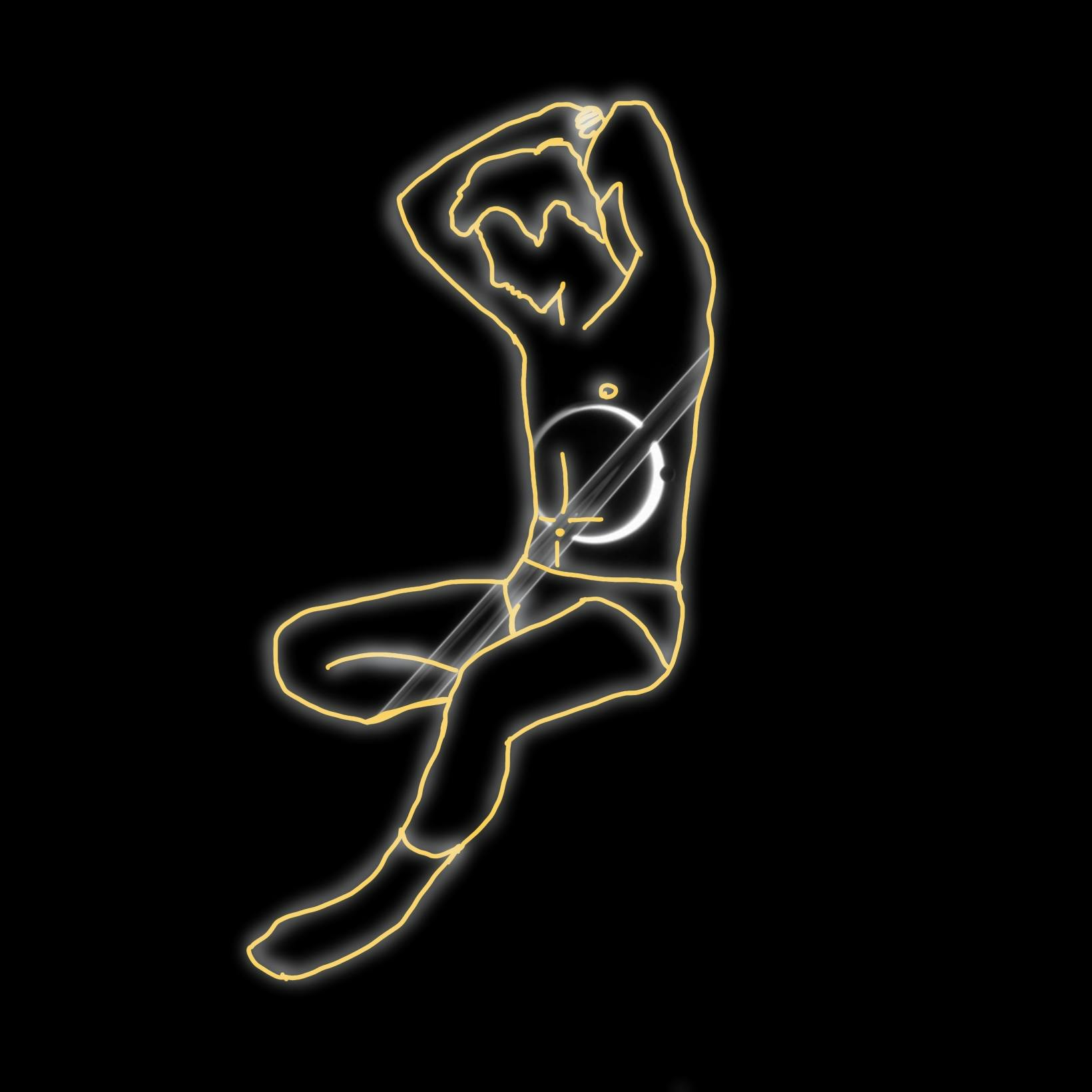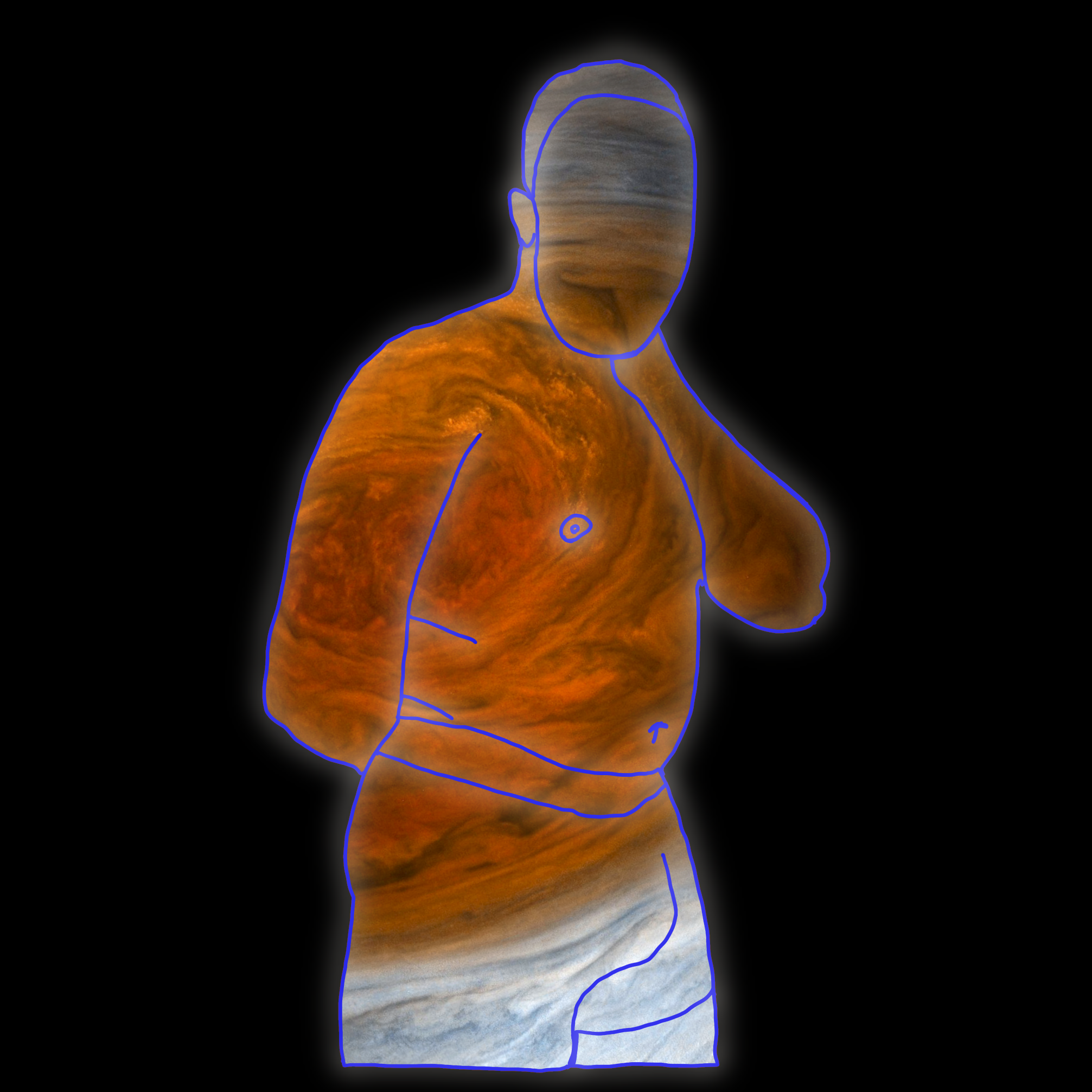During this tough and challenging year, I’ve started learning digital art and doing life modeling (the drawing rather than the posing!) So, I started thinking about how I could combine my new found passion with my long-term love of astronomy. The Space Pin-ups Collection is the result.
We have 12 images of glowing neon pin-up models, each used to represent 12 astronomical objects, locations, concepts, and hypotheses.
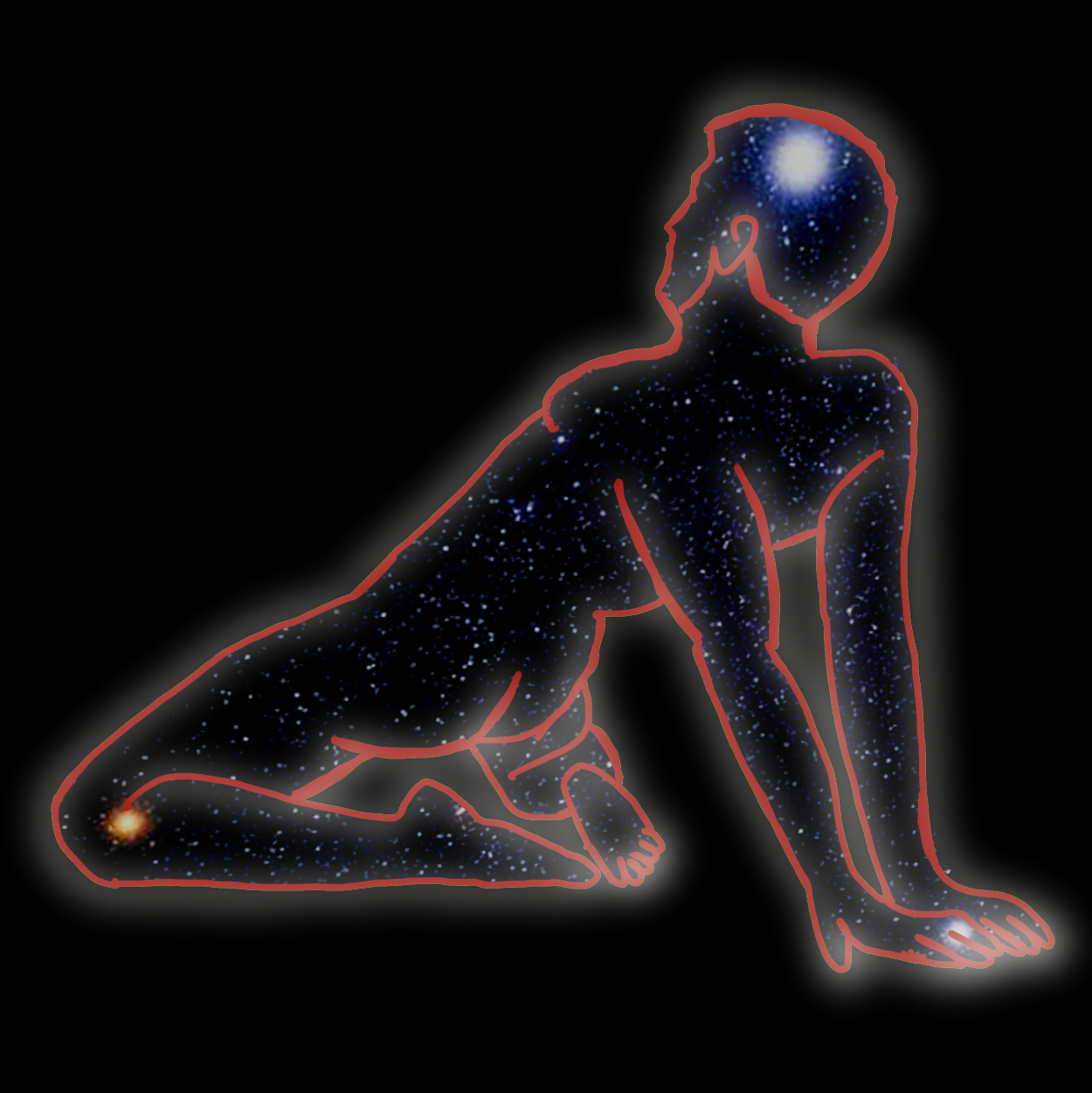
Look up, on a clear night in the winter and you will see the Winter Triangle, an asterism whose vertices are three of the brightest stars in the sky: Sirius, Betelgeuse, and Procyon, the primary stars in Canis Major, Orion, and Canis Minor, respectively.
This allows me to introduce one of my favourite terms: asterism. An asterism is not a constellation per se, but a pattern of stars that is popular but without a formally named area attached. The most famous asterism is certainly the Plough (AKA the Big Dipper), part of Ursa Major.
Model: Dr Steven Di Costa based on a photograph by Erwin Olaf
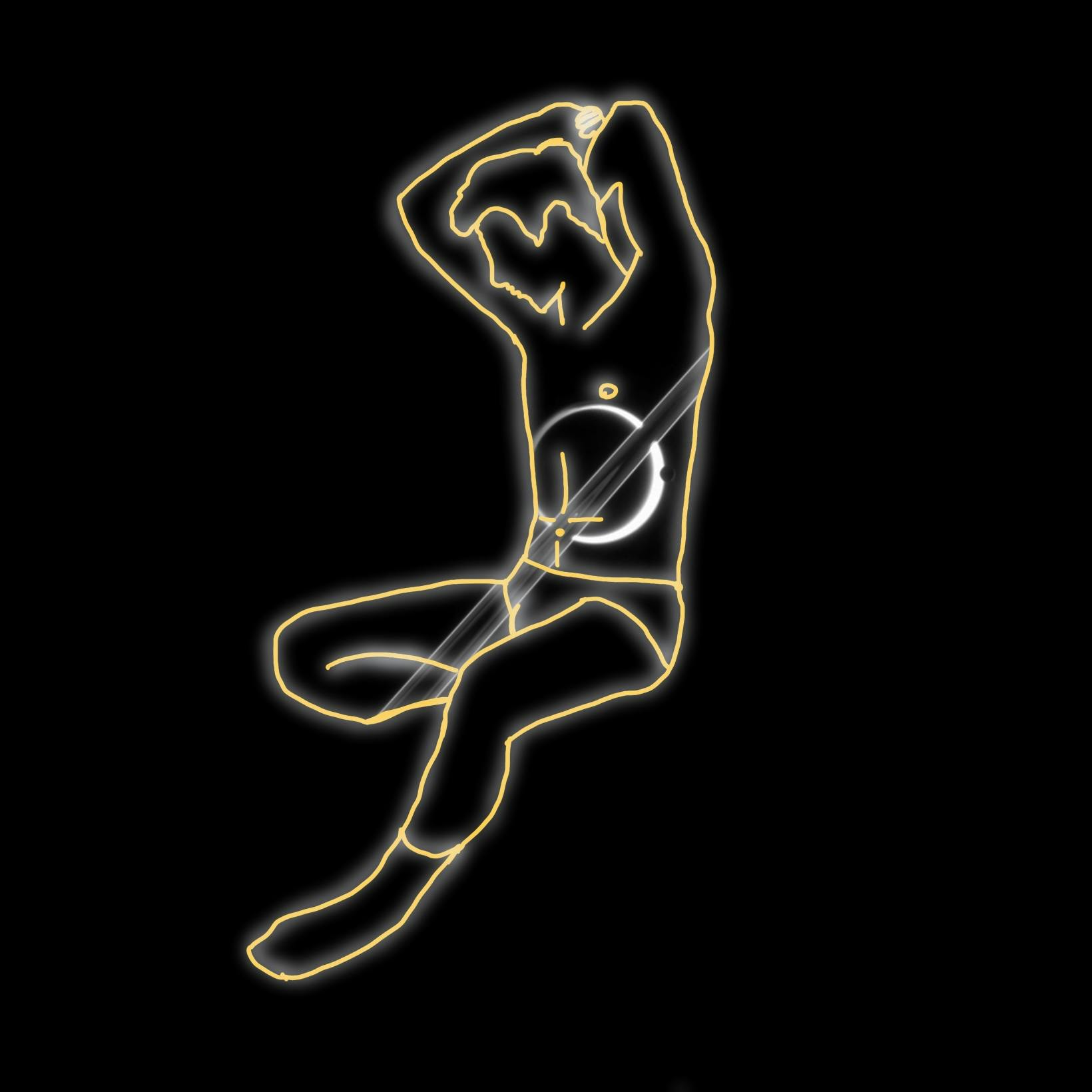
When three celestial bodies are roughly in a straight line, they are in syzygy. In this case, we have Saturn’s largest moon Titan eclipsing the Sun with fellow moon Enceladus on its lower right. The whole composition is cut in half by the backlit rings of the giant planet.
Model: Mufseen
Space: NASA/JPL/Space Science Institute
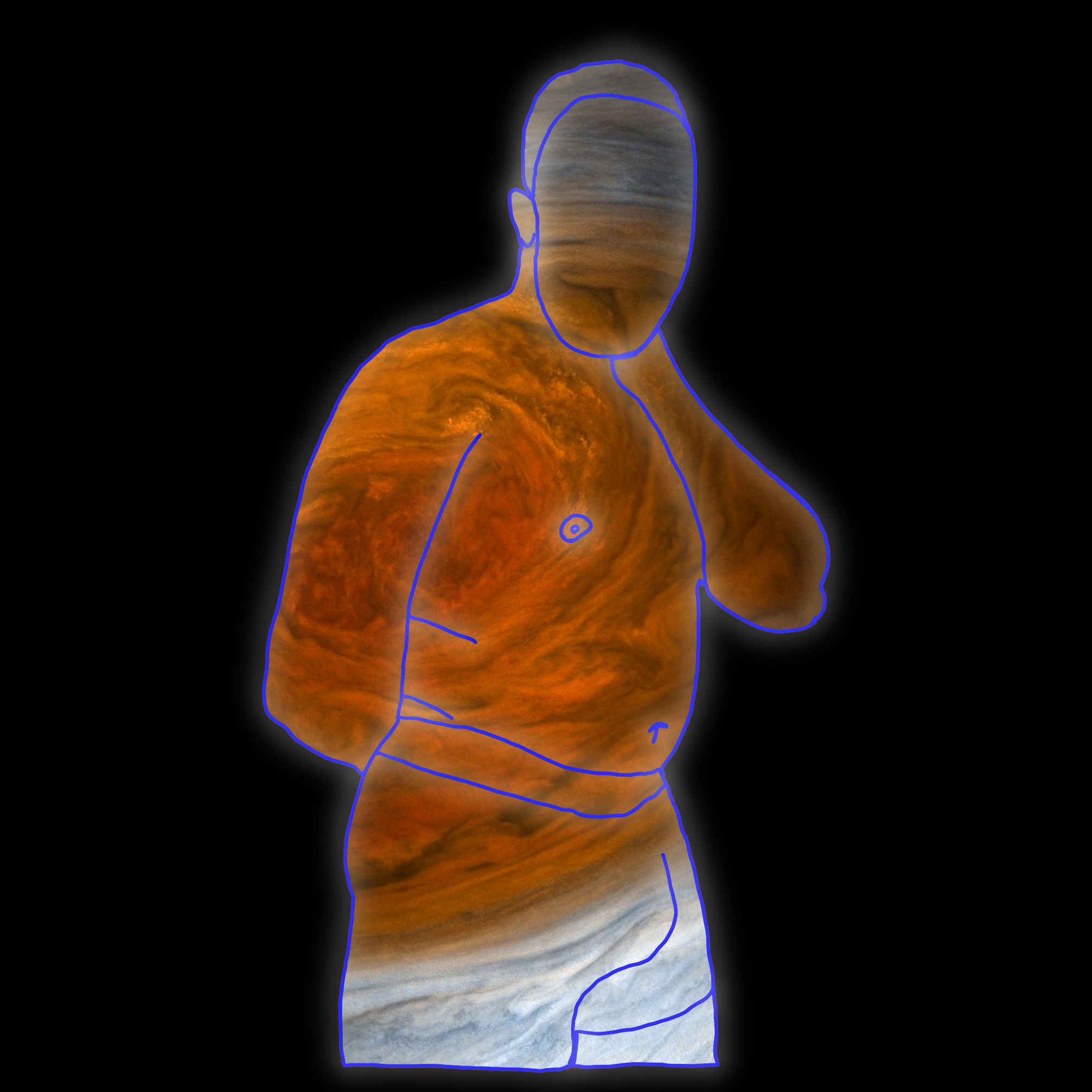
The western nomenclature of planets got it right with Jupiter. It is the king of the planets, so large in fact that 1,300 Earths would fit inside it.
Its storms and swirling clouds, seen here in images from NASA’s Juno, are on a scale that easily overshadow any on Earth. Truly majestic.
Model: Anonymous
Space: NASA/SwRI/MSSS/Gerald Eichstädt/Seán Doran
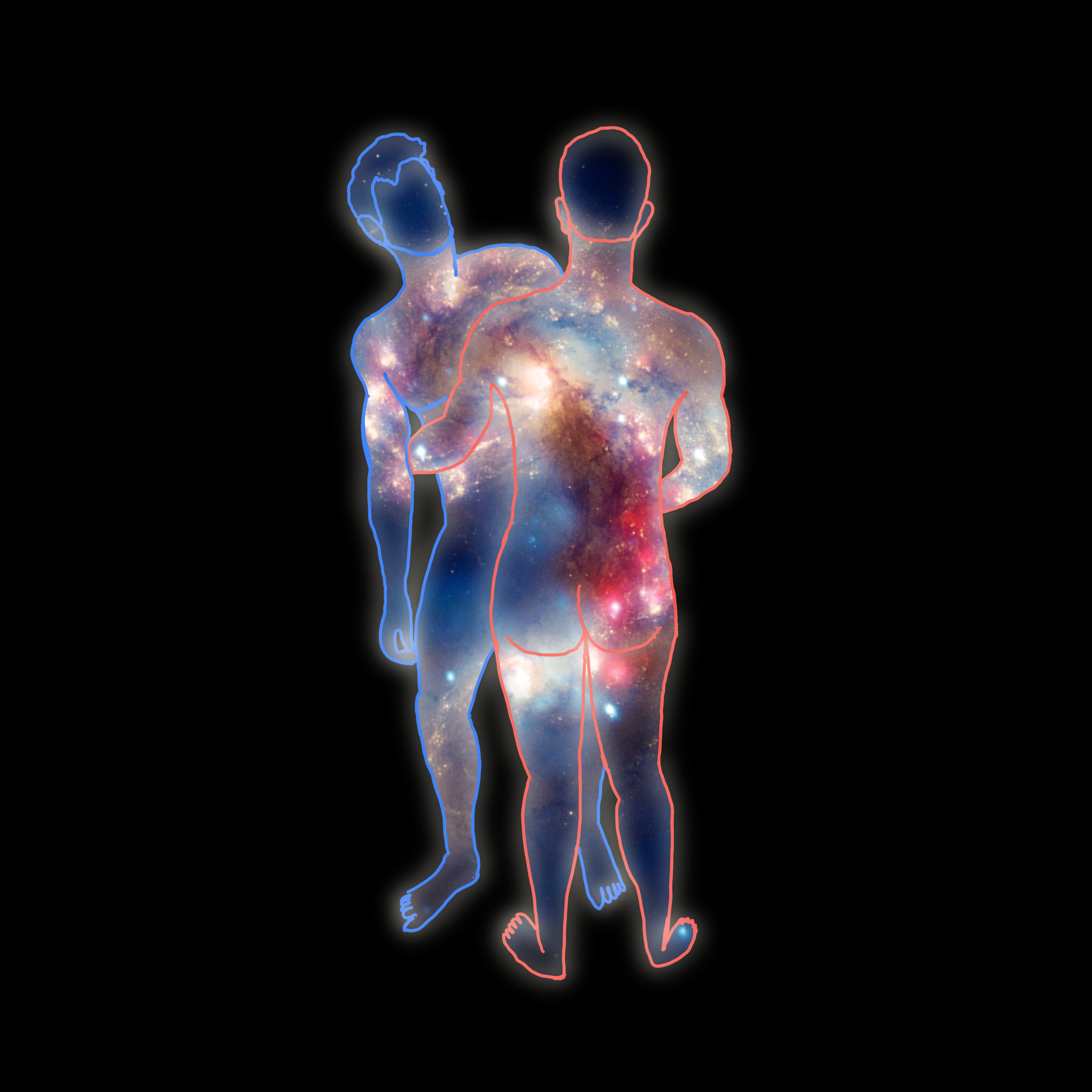
Over cosmic time, galaxies are quite the social bunch. The largest galaxies will collide with at least one similar-sized neighbour as well as several smaller companions, in an act known as galactic cannibalism. The ones in the image are the famous antennae galaxies, which is one of the most beautiful mergers we have seen in the Universe.
Models: Anonymous
Space: X-ray (NASA/CXC/SAO/J.DePasquale), IR( NASA/JPL-Caltech), Optical (NASA/STScI)
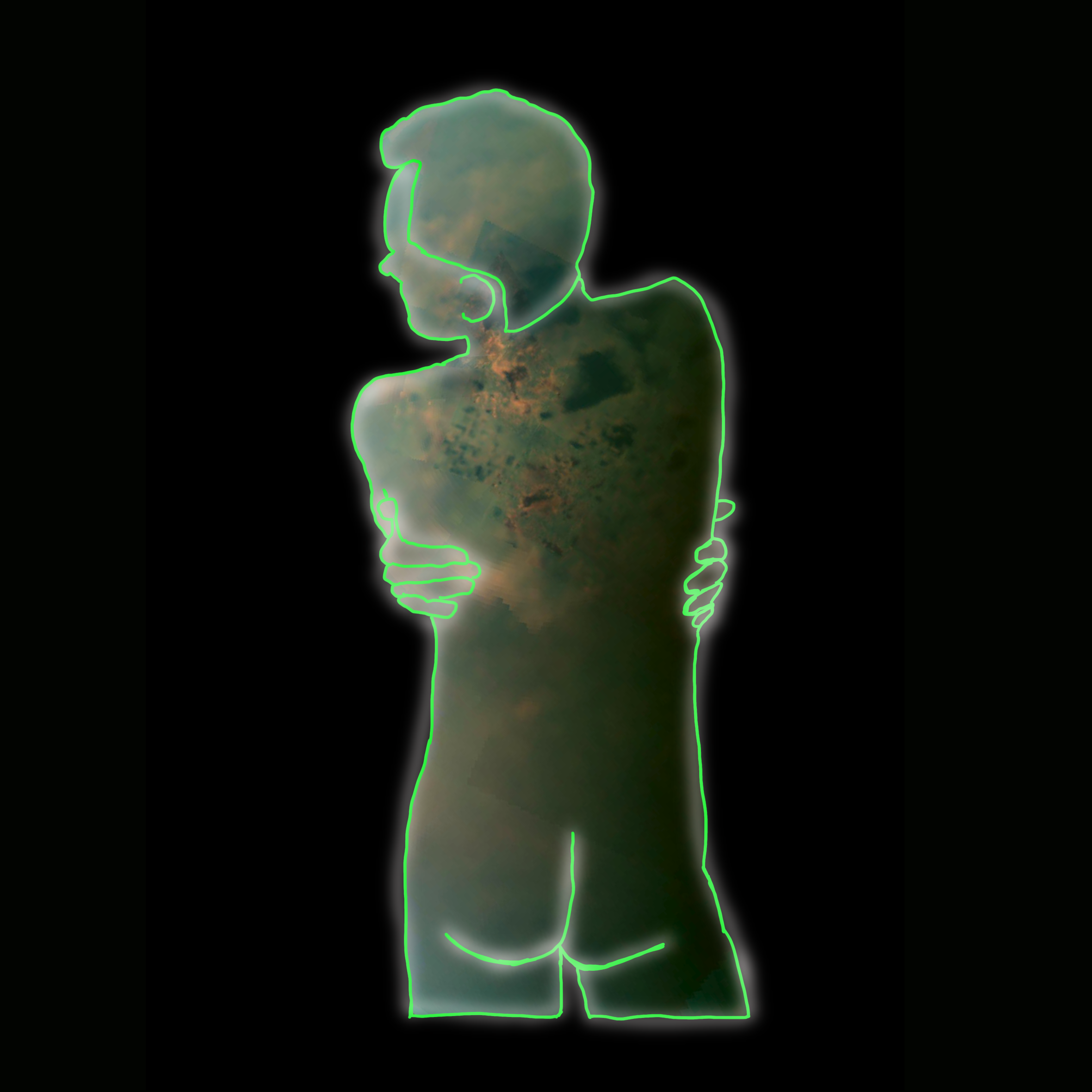
Titan is the largest moon of Saturn, the only known moon with a dense atmosphere, and the only other place in the Solar System where stable surface liquid has been found. But it’s not water. It’s liquid methane.
This frigid world has rivers and lakes, and if you look through the clouds (in infrared light), you can see the weak sunlight reflecting on those lakes. An absolutely breathtaking sight!
Model: Matt Hayward
Space: NASA/JPL-Caltech/University of Arizona/University of Idaho.
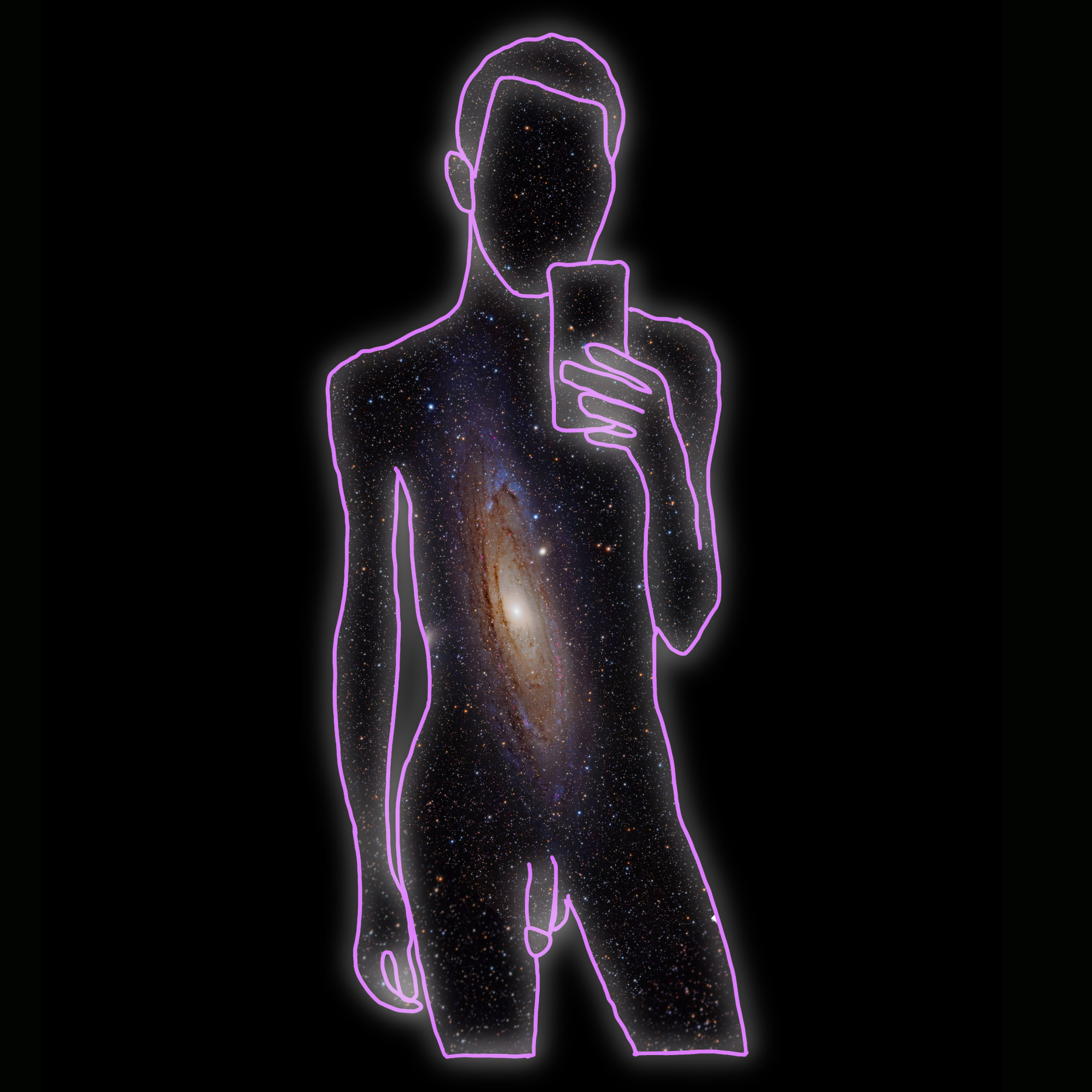
Observations suggest that the universe is permeated by an invisible substance: dark matter. It outweighs regular matter 5 to 1 and it surrounds galaxies in vast halos.
These don’t tend to look like our lovely model here around Andromeda, but we can but dream.
Model: Anonymous
Space: Adam Evans via Wikimedia Commons CC BY 2.0
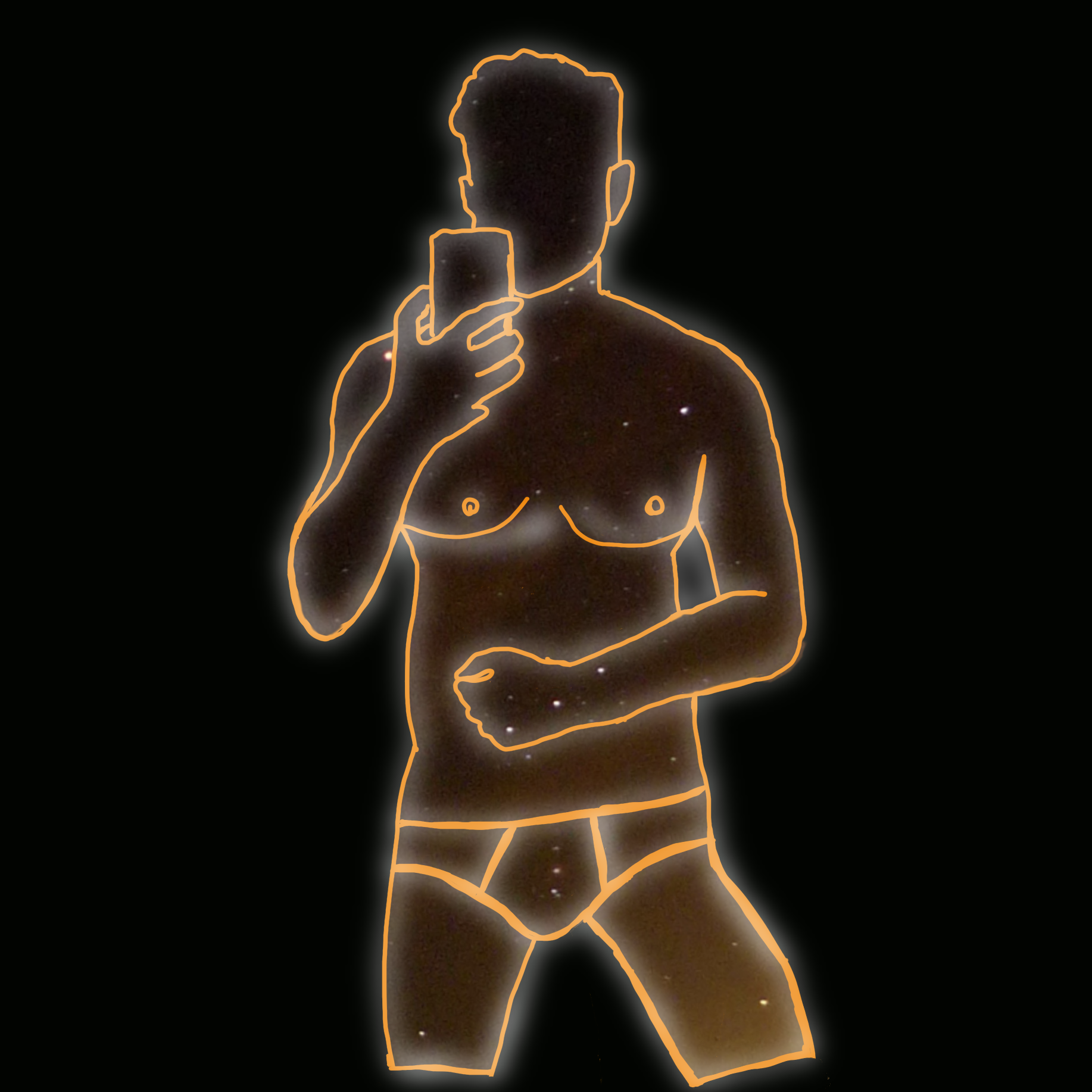
Every culture in the world throughout the ages of humanity looked up at these seven main stars and saw something in them. A deity, a giant, a swordsman, animals, games, legendary heroes. In the West, from the Greek-Roman tradition this is Orion, the hunter.
Its left shoulder is Betelgeuse, the closest red supergiant to Earth… a peculiar star that one day over the next 100,000 years will go supernova.
Model: Me
Space: Also Me
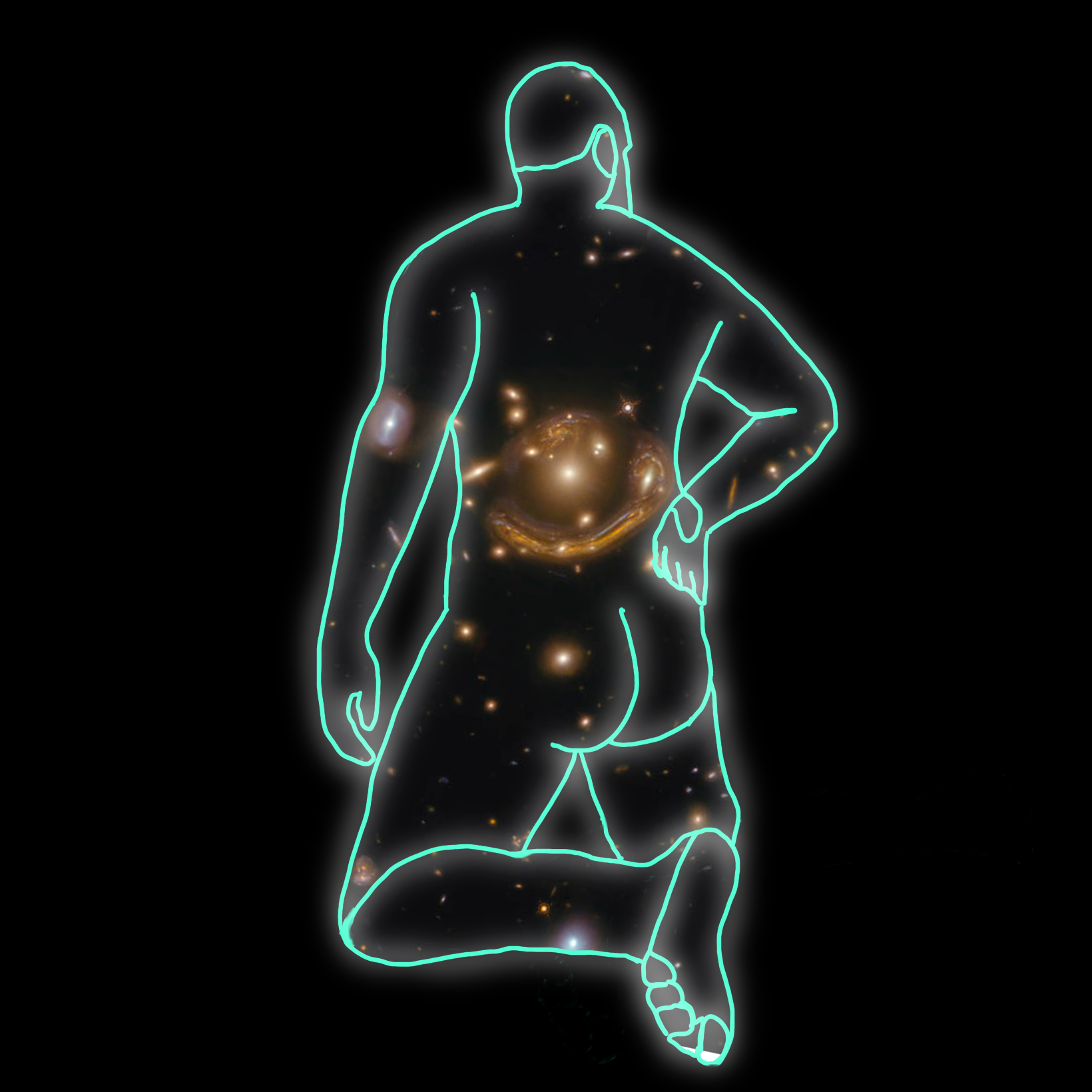
Mass alters the geometry of space-time. We don’t see it in our everyday life, but the most impressive objects in the universe warp the continuum around them. This change in geometry can be seen in gravitational lensing.
This is when the light of a distant background galaxy is distorted and magnified by a massive foreground object, such as a galaxy cluster. If in perfect alignment, the distorted image forms a perfect ring, known as an Einstein ring!
The one in this photo, GAL-CLUS-022058s, is the largest and one of the most complete Einstein rings we have ever seen.
Model: Anonymous
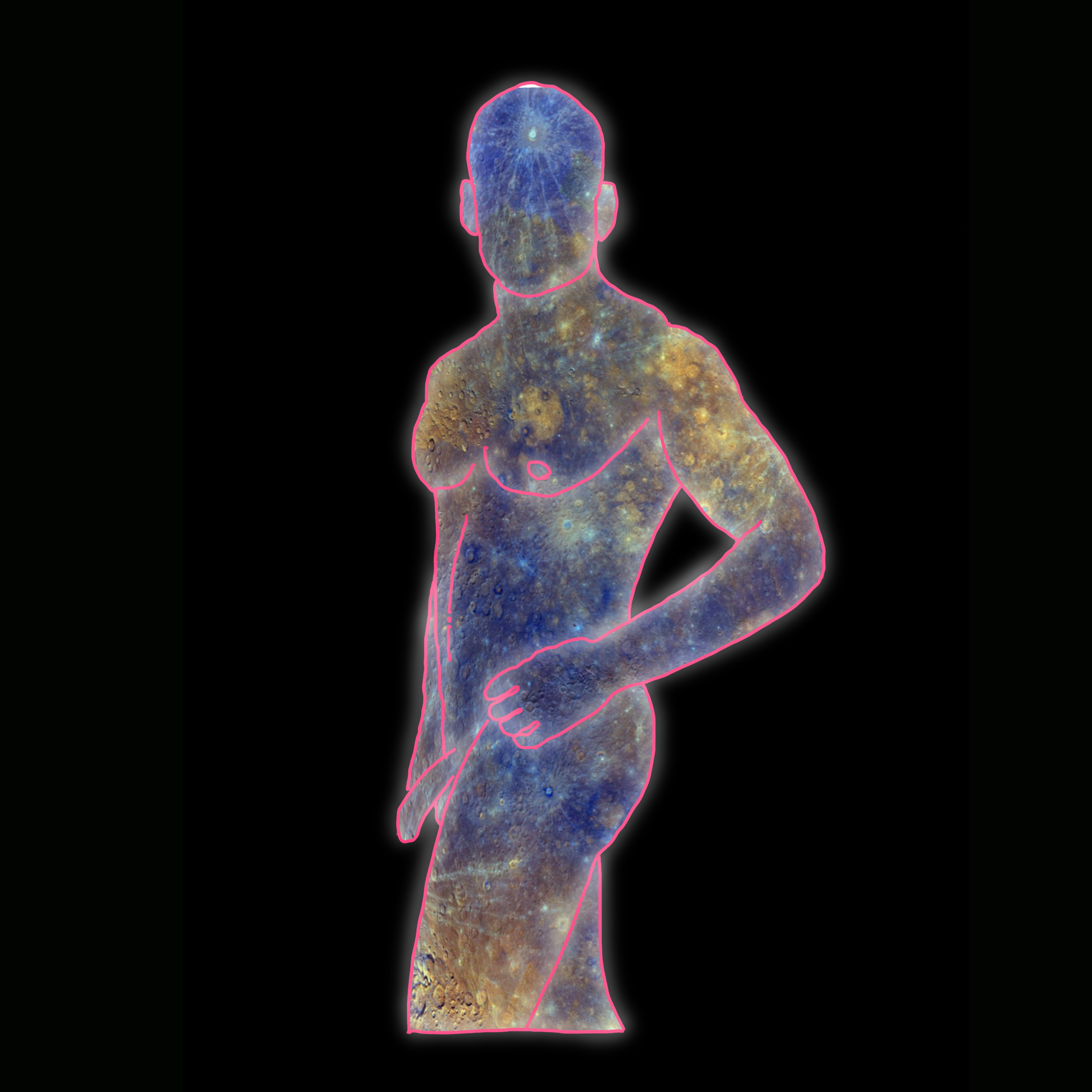
At 85 kilometers across with rays that extend for hundreds of kilometers, the Debussy Crater (in our model’s head) is one of the most prominent features of Mercury. The smallest planet is a world we still struggle to understand. Its geology remains mysterious, especially compared to the other rocky planets. The work of David Pegg, our model, is helping solve this.
In this enhanced image from NASA’s MESSENGER mission we gain a glimpse into the ages of the surface feature of Mercury. The blues, purple, and oranges are all different ages of lava flows. The darker the colour the older the lava, and these deposits are full of sulfur and carbon.
ESA mission BepiColombo is enroute to Mercury. It’s expected to arrive by late 2025 where it will provide new data and insight into this planet.
Model: David Pegg
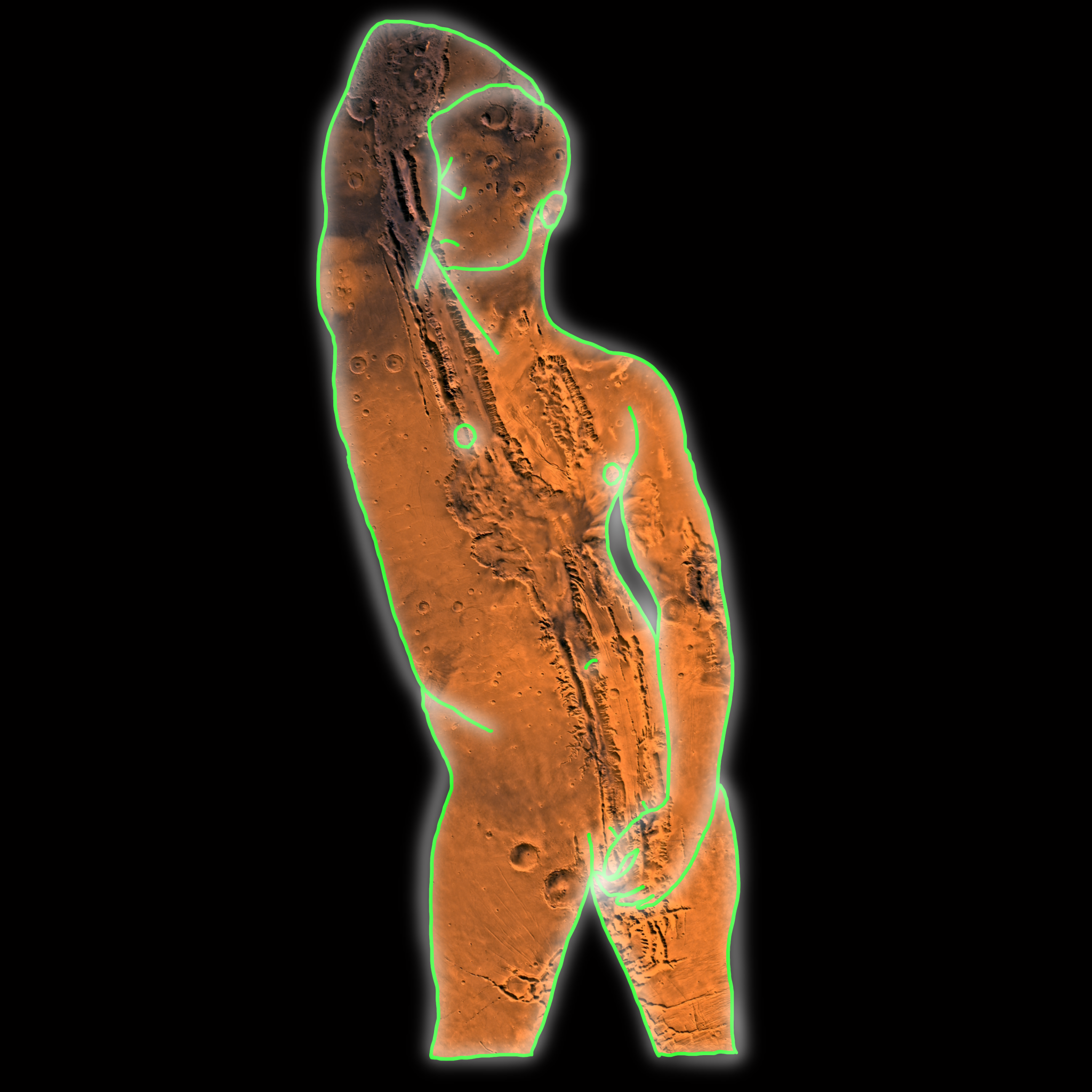
Valles Marineris is among the most incredible geological features in the solar system. It is a deep rift on the surface of Mars. A system of canyons among the largest ones in the solar system, surpassed in length only by rift valleys on Earth.
While we are not certain of its formation, it is believed to have come to be as a consequences of major volcanic changes happening on Mars and its subsequence growth and widening due to erosion from the elements, which might include liquid water.
Mars today is a world without active volcanos and with water trapped away in underground lakes, but the signs of what it used to be remains across its surface.
Model: Simon Clark
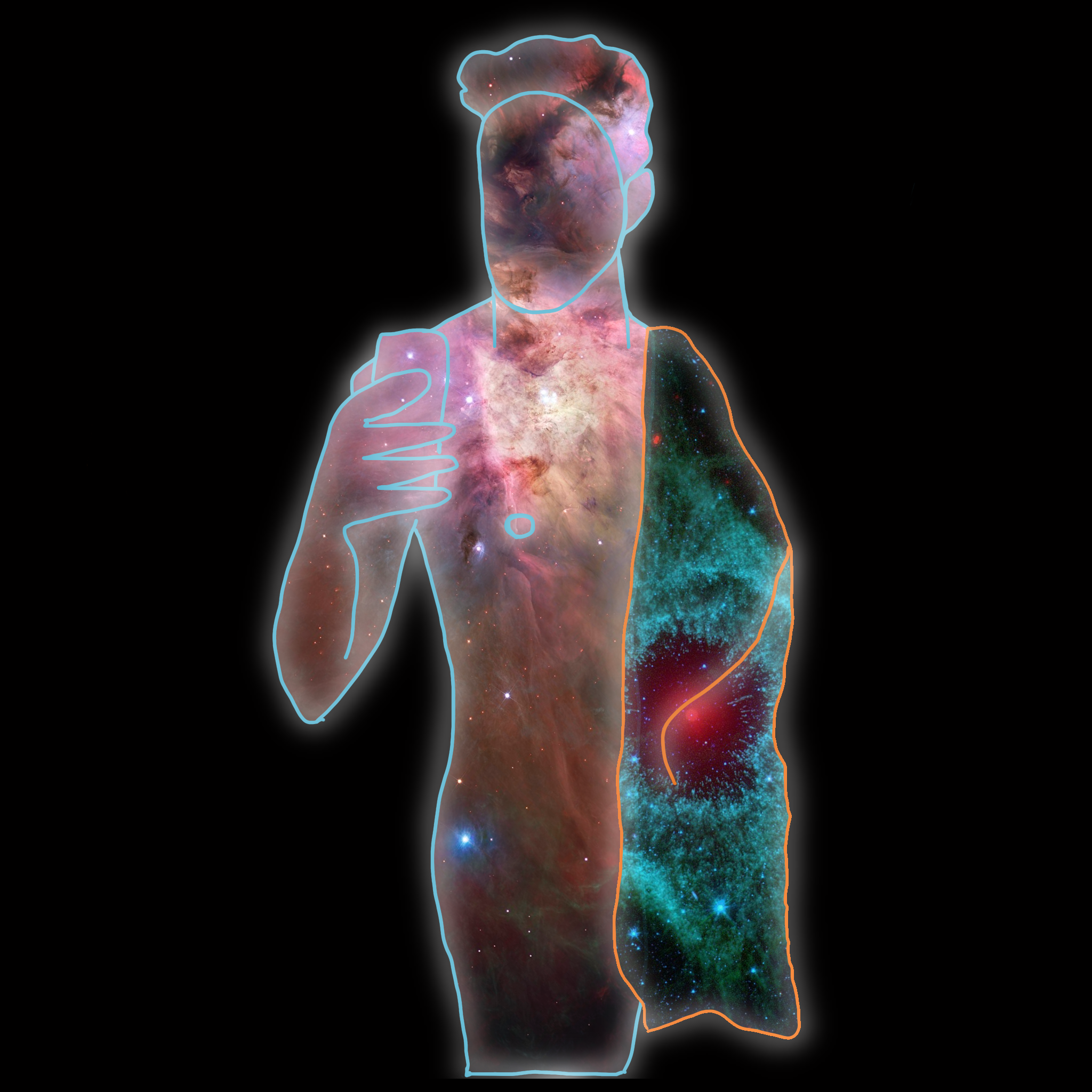
Nebulae are vast clouds of interstellar gas, mostly hydrogen and helium. This is where stars form, in nebulae that act as stellar nurseries. When stars become red giants they begin to release their outer layers creating a nebula around themselves. And the small fraction of stars that go supernova create more nebulae still.
They are the Alpha and the Omega of stellar life, book-ending the birth, demise, and death of stars. They are also where we come from, as we are literally made of that cosmic dust.
The pinup shows two beautiful examples. The model is the Orion nebula, the closest region of massive star formation to Earth, just 1,340 lighty years away. The towel is the Helix Nebula, a planetary nebula formed as a low-mass star shed its outer layer creating this “Eye of god” effect.
Model: Anonymous
Space: Orion Nebula (NASA, ESA, M. Robberto and the Hubble Space Telescope Orion Treasury Project Team) – Helix Nebula (NASA, JPL, Caltech, Kate Su)
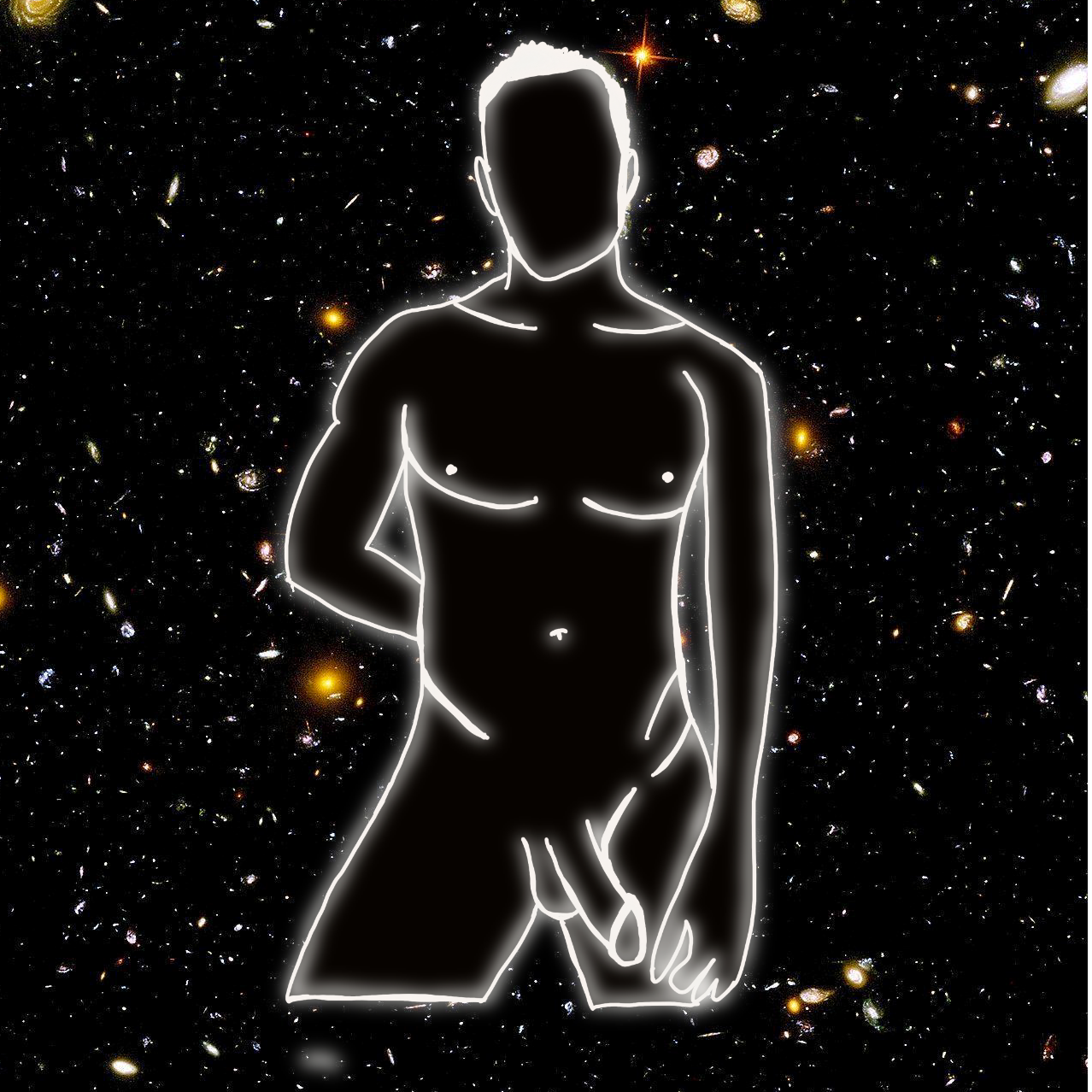
You won’t feel it but you are being pulled. Well, not just you. The whole Milky Way and many many other galaxies in a region of hundreds of millions of light-years are all accelerating towards something we can’t quite see. The culprit has been given an evocative name: the Great Attractor.
There’s nothing nefarious about our inability to see it. Unfortunately the location of this mysterious pull is right behind the center of our galaxy. This is the so called “Zone of Avoidance” because we can’t really see things that are in that direction.
Radio observations from 2016 have found the likely culprit for this gravitational pull, a supercluster of galaxies. This newly-named Vela supercluster is consistent with the expectation for the Great Attractor, but there’s more. The Great Attractor itself is believed to be moving, towards the Shapley Supercluster.
Model: OsitoLND

